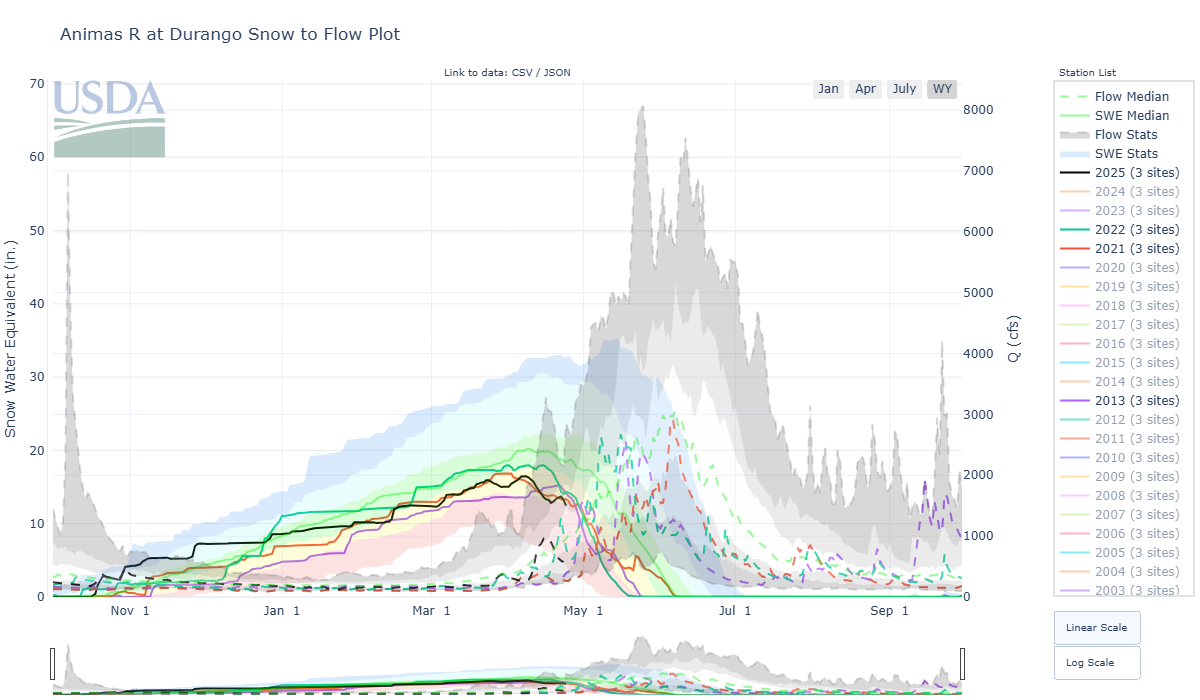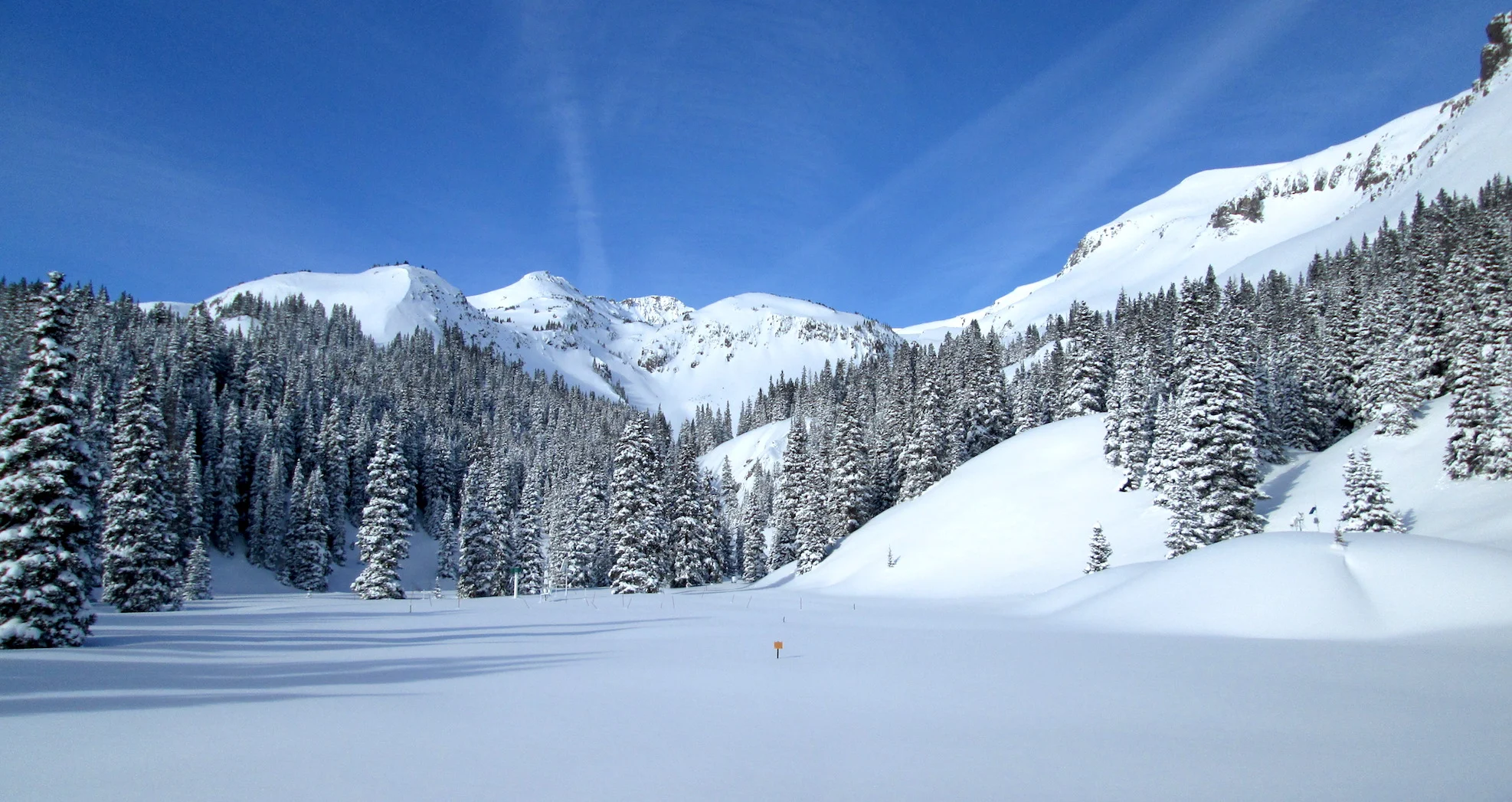CODOS UPDATE APRIL 25, 2025: Looking Towards Peak Flow
Greetings from Silverton,
With the southern Colorado’s struggling snowpack, warm weather, surface dust, and weather forecast, it is looking like streams and rivers will peak early this runoff season. Peak flow is a topic we usually hit on in spring and in past updates have discussed in detail.
Here in our Senator Beck Basin, we have discussed previously the relationship of snow-all-gone dates and peak flow in our stream gauge and downstream in the Uncompahgre and Animas gauges, which mirror each other pretty well. We have been investigating this in detail through a close collaboration with Colorado State University and finally the work has been published in the research publication Water. This will be published very soon and we will post to our website when available.
Dust severity is not as bad as in recent years, but the persistent current surface dust combined with the sunny/warm weather is chipping away at the snowpack. And the light buried dust layers will be merging at the surface as well as spring progresses, further darkening the surface. It is also worth the reminder that new dust events can happen anytime, which would be deposited on the surface and having an immediate effect.
Take Care
Below: Snow to Flow plots for select watersheds.








This year, with very little snow at lower and mid elevations, we are guessing that snowmelt contributions from the ~11,000’ level as well as elevations above tree line will constitute peak flow, which would mean the second peak will be the actual peak. For the Animas at Durango, we are guessing a peak date of May 16-18 with a discharge of ~2,300 cfs. On the Uncompahgre side, the timing will be closer to latter May as that watershed comprises of more higher elevations, and a discharge of around 600 cfs?
Below: Correlation of snow disappearance date at Swamp Angel Study Plot and Senator Beck Study Plot and the first streamflow peak and second peak. When snow is gone at Swamp Angel we can expect the first peak of the snowmelt hydrograph, and when snow is gone at Senator Beck we can expect the second peak. Which peak is the largest varies.







